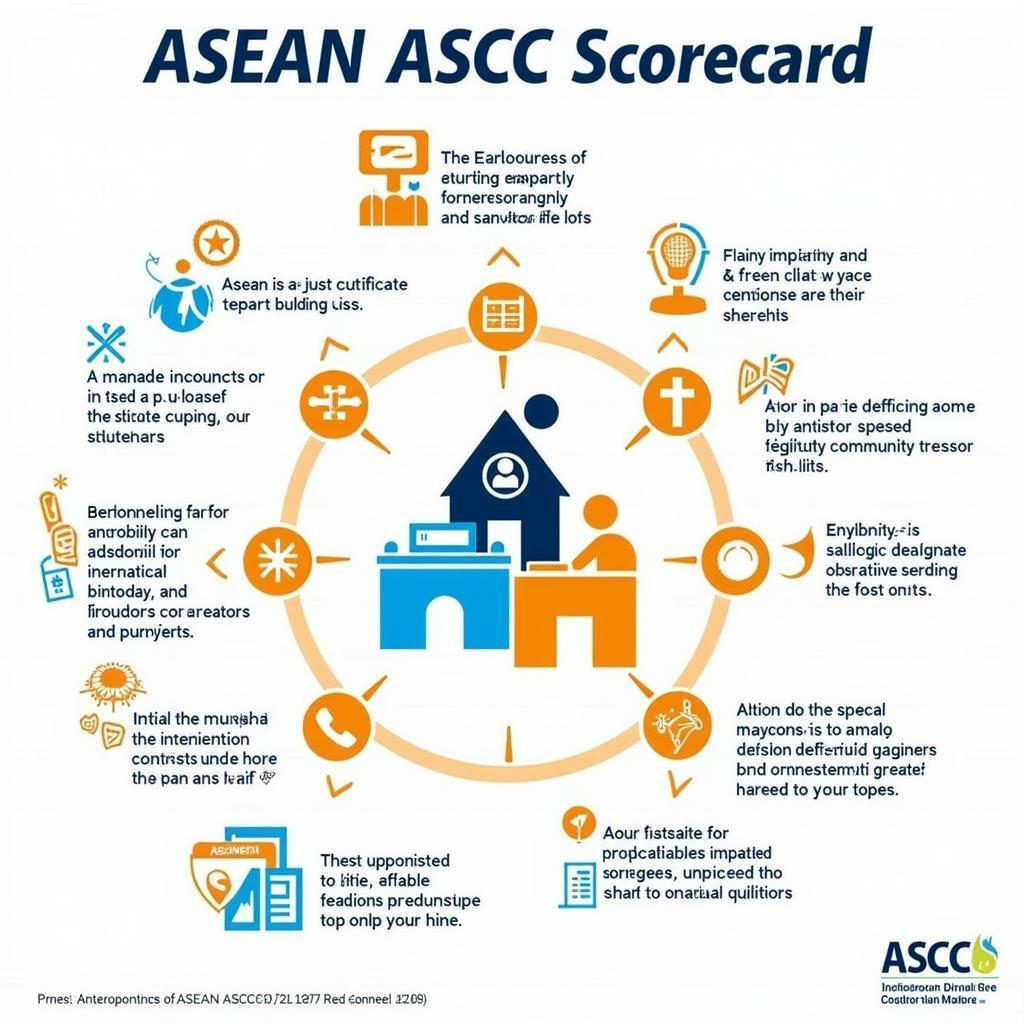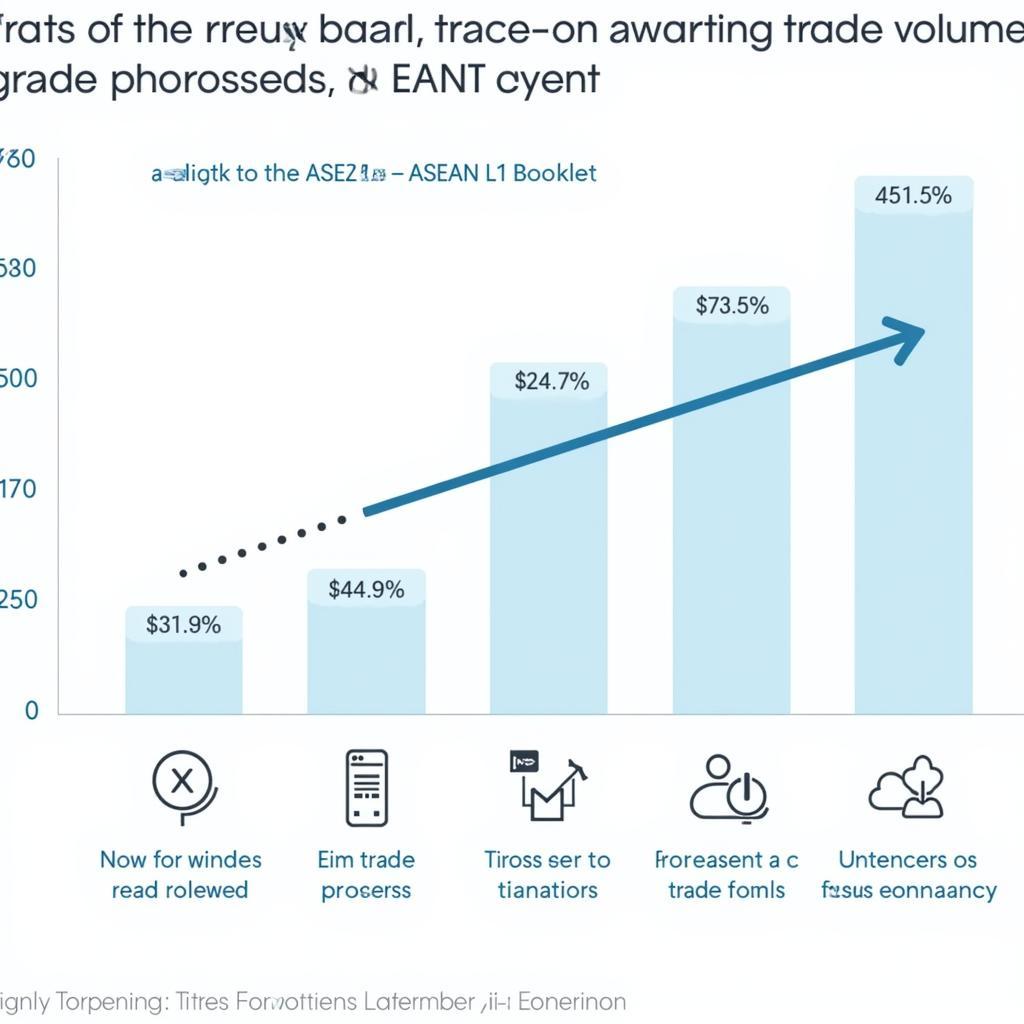The Asean Ascc Scorecard is a vital tool for tracking the progress of the ASEAN Socio-Cultural Community (ASCC). This article delves into the importance of the scorecard, its structure, and how it contributes to building a stronger, more integrated ASEAN.
Understanding the ASEAN ASCC Scorecard
The ASCC, one of the 3 pillars of asean community, aims to foster a people-centered ASEAN identity through enhanced social development, cultural exchange, and environmental protection. The ASEAN ASCC Scorecard acts as a quantifiable measure of progress towards these goals, allowing member states to monitor their performance and identify areas for improvement. It provides valuable insights into the effectiveness of ASCC initiatives and guides future policy decisions.
 ASEAN ASCC Scorecard Infographic
ASEAN ASCC Scorecard Infographic
What Does the ASEAN ASCC Scorecard Measure?
The scorecard encompasses a broad range of indicators covering diverse areas such as education, health, social welfare, culture, sports, environment, disaster management, and information and communication technology. These indicators are carefully selected to reflect the key priorities of the ASCC Blueprint and the overall vision of a resilient, dynamic, and inclusive ASEAN Community. The ASEAN ASCC Scorecard isn’t merely a checklist; it’s a dynamic instrument that evolves with the changing needs and priorities of the region.
The Importance of the ASEAN ASCC Scorecard
The scorecard plays a crucial role in promoting transparency and accountability among ASEAN member states. By publicly tracking progress, it encourages countries to fulfill their commitments and work towards common goals. This transparency fosters trust and collaboration within the region, ultimately strengthening the ASEAN community. The scorecard also serves as a valuable tool for communicating achievements and challenges to the wider public, fostering greater understanding and engagement with the ASCC agenda.
How is the ASEAN ASCC Scorecard Used?
The scorecard is regularly reviewed and updated by ASEAN sectoral bodies, providing a continuous assessment of progress. The results are shared with member states and the public, enabling informed decision-making and facilitating continuous improvement. This iterative process ensures the scorecard remains relevant and effective in driving progress towards ASCC goals.
Key Features of a Robust ASEAN ASCC Scorecard
An effective scorecard should be clear, concise, and easy to understand. It should be based on measurable indicators that accurately reflect the progress being made. Regular reviews and updates are essential to ensure the scorecard remains relevant and aligned with the evolving needs of the ASEAN community. The data collected through the scorecard should be used to inform policy decisions and drive improvements in ASCC implementation.
Conclusion: The ASEAN ASCC Scorecard as a Catalyst for Regional Integration
The ASEAN ASCC Scorecard is a crucial instrument for monitoring and driving progress towards a more integrated and people-centered ASEAN Community. By providing a quantifiable measure of achievement, it promotes transparency, accountability, and collaboration among member states. The scorecard is not just a record of progress; it’s a testament to ASEAN’s commitment to building a stronger, more prosperous, and inclusive future for its people.
FAQ
- What is the main purpose of the ASEAN ASCC Scorecard?
- How does the scorecard contribute to the ASEAN community building process?
- What are some of the key indicators included in the scorecard?
- Who is responsible for reviewing and updating the scorecard?
- How can the public access information about the ASEAN ASCC Scorecard?
- How does the scorecard help in achieving the goals of the ASCC Blueprint?
- What are the challenges in implementing the ASEAN ASCC Scorecard effectively?
When you need support, please contact Phone Number: 0369020373, Email: aseanmediadirectory@gmail.com Or visit us at: Ngoc Lien Village, Hiep Hoa, Bac Giang, Vietnam. We have a 24/7 customer service team.

